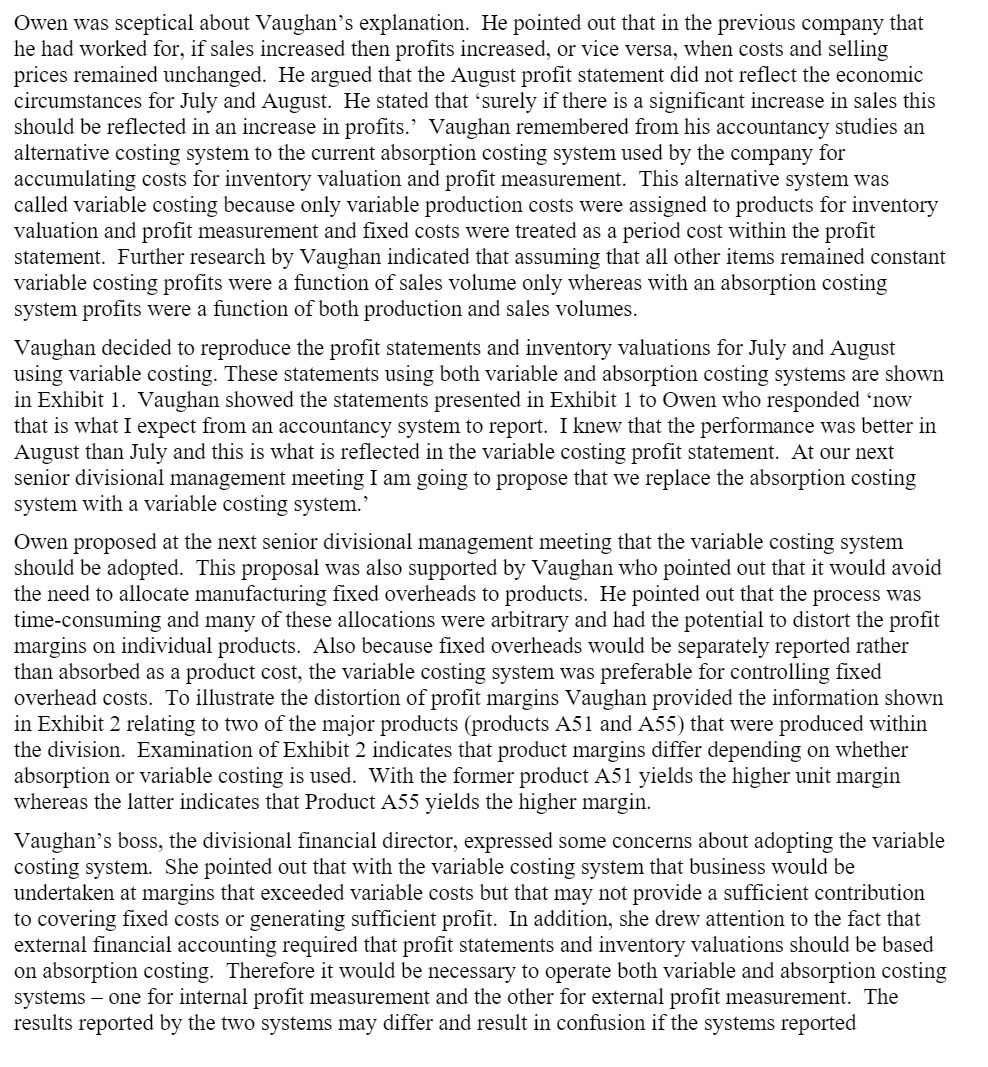Owen was sceptical about Vaughan's explanation. He pointed out that in the previous company that he had worked for, if sales increased then prots increased, or vice versa, when costs and selling prices remained unchanged. He argued that the August prot statement did not reect the economic circumstances for July and August. He stated that 'surely if there is a signicant increase in sales this should be reected in an increase in prots.' Vaughan remembered 'om his accountancy studies an alternative costing system to the current absorption costing system used by the company for accumulating costs for inventory valuation and prot measurement. This alternative system was called variable costing because only variable production costs were assigned to products for inventory valuation and prot measurement and xed costs were treated as a period cost within the prot statement. Further research by Vaughan indicated that assuming that all other items remained constant variable costing prots were a function of sales volume only whereas with an absorption costing system prots were a function of both production and sales volumes. Vaughan decided to reproduce the prot statements and inventory valuations for July and August using variable costing. These statements using both variable and absorption costing systems are shown in Exhibit 1. Vaughan showed the statements presented in Exhibit 1 to Owen who responded 'now that is what I expect from an accountancy system to report. I knew that the performance was better in August than July and this is what is reected in the variable costing prot statement. At our next senior divisional management meeting I am going to propose that we replace the absorption costing system with a variable costing system.\" Owen proposed at the next senior divisional management meeting that the variable costing system should be adopted. This proposal was also supported by Vaughan who pointed out that it would avoid the need to allocate manufacturing xed overheads to products. He pointed out that the process was time-consuming and many of these allocations were arbitrary and had the potential to distort the prot margins on individual products. Also because xed overheads would be separately reported rather than absorbed as a product cost, the variable costing system was preferable for controlling xed overhead costs. To illustrate the distortion of prot margins Vaughan provided the information shown in Exhibit 2 relating to two of the major products (products A51 and A55) that were produced within the division. Examination of Exhibit 2 indicates that product margins differ depending on whether absorption or variable costing is used. With the former product A51 yields the higher unit margin whereas the latter indicates that Product A55 yields the higher margin. Vaughan's boss, the divisional nancial director, expressed some concerns about adopting the variable costing system. She pointed out that with the variable costing system that business would be undertaken at margins that exceeded variable costs but that may not provide a sufcient contribution to covering xed costs or generating sufcient prot. In addition, she drew attention to the fact that external nancial accounting required that prot statements and inventory valuations should be based on absorption costing. Therefore it would be necessary to operate both variable and absorption costing systems one for internal prot measurement and the other for external prot measurement. The results reported by the two systems may differ and result in conJsion if the systems reported







